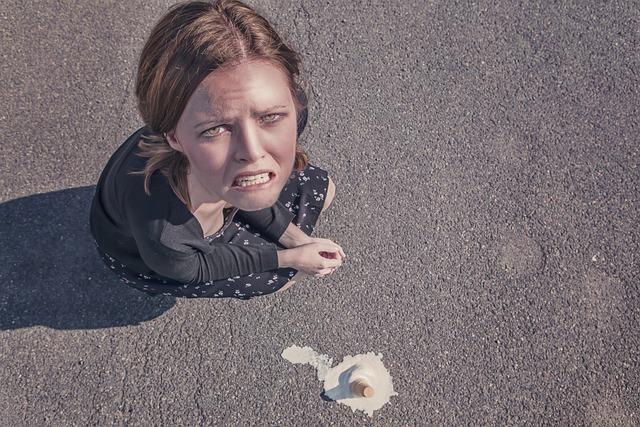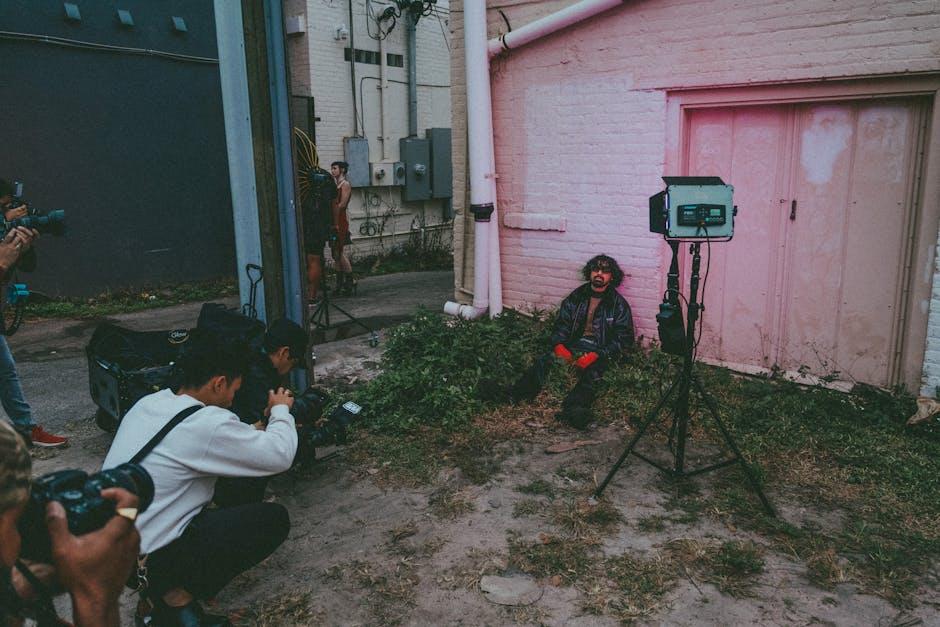In the world of filmmaking, where every frame is meticulously crafted and precision is paramount, bloopers stand as delightful anomalies. These unscripted moments, often relegated to the credits or DVD extras, offer a candid glimpse behind the curtain. But do they signify inefficiencies in the filmmaking process, or are they simply endearing reminders of our shared humanity? As we delve into the chaotic charm of on-set blunders, we explore whether these gaffes are cracks in the cinematic facade or simply the joyous echoes of human spontaneity. Join us as we unravel the true nature of bloopers in the realm of film.
Understanding Bloopers as Insightful Glimpses Behind the Scenes
Bloopers often serve as charming reminders that film sets, despite their polished final products, are lively environments bustling with human activity. These outtakes, filled with unexpected giggles and unscripted mishaps, offer a refreshing authenticity that contrasts with the meticulously crafted narratives we see on screen. Rather than highlighting inefficiency, bloopers can be seen as valuable insights into the collaborative and sometimes unpredictable nature of filmmaking.
These candid moments showcase several aspects of the production process:
- Team Dynamics: The camaraderie and rapport among cast and crew become evident, revealing the teamwork essential for successful storytelling.
- Creative Exploration: Actors often experiment with lines and delivery, showing the creative freedom that can lead to brilliant improvisation.
- Problem-Solving: Challenges encountered on set often lead to innovative solutions, illustrating the adaptability required in filmmaking.
In essence, bloopers highlight the human side of production, reminding audiences of the shared laughter and learning behind the scenes.
 Filmmaking“>
Filmmaking“>
The Balance Between Perfection and Authenticity in Filmmaking
In the world of filmmaking, the quest for perfection often stands at odds with the embrace of authenticity. Bloopers, those delightful snippets of unscripted moments, serve as a testament to this delicate balance. On one hand, they can be seen as a lapse in efficiency, a peek into the chaos behind the curtain. Yet, they also offer a glimpse into the genuine, unfiltered moments that remind us of the human element in storytelling.
- Unplanned Laughter: A shared chuckle between cast members can reveal the camaraderie that fuels creativity.
- Unexpected Mishaps: Props that fail or lines that get tangled can underscore the unpredictability of the creative process.
- Improvised Genius: Some of the most memorable scenes arise from on-the-spot creativity sparked by a so-called mistake.
While striving for flawlessness can drive a production to new heights, embracing the occasional slip can foster a more authentic and relatable narrative. In a way, these imperfections may not signify inefficiency but rather a celebration of the imperfect beauty inherent in the art of filmmaking.

How Bloopers Can Enhance Creativity and Team Dynamics
Bloopers, those unexpected moments that often occur during filming, can serve as powerful catalysts for creativity and team dynamics. They remind us of the delightful unpredictability of human nature, encouraging a more relaxed and open-minded atmosphere on set. When a scene goes hilariously off-script, it opens the door for fresh ideas and improvisation, allowing actors and crew members to explore new possibilities. This can lead to spontaneous moments of brilliance that might not have been discovered through meticulous planning alone.
Furthermore, the shared experience of laughter and light-heartedness fosters stronger bonds among team members. Consider these benefits:
- Enhanced Communication: Laughter breaks down barriers, promoting a more approachable and communicative environment.
- Increased Trust: Witnessing each other’s vulnerabilities creates a sense of trust and camaraderie.
- Boosted Morale: Humor can lighten the mood, reducing stress and boosting overall morale.
In essence, embracing bloopers as part of the creative process can transform a film set into a dynamic playground of innovation and connection.

Practical Approaches to Embrace and Learn from On-Set Mistakes
Bloopers, often seen as charming mishaps, can be transformed into valuable learning experiences. By embracing these on-set mistakes, filmmakers can foster a culture of continuous improvement and creativity. Here are some practical approaches to turn these moments into opportunities for growth:
- Encourage Open Dialogue: Create a supportive environment where cast and crew feel comfortable discussing errors. This can lead to shared insights and innovative solutions.
- Analyze and Reflect: Use bloopers as case studies. Reviewing these moments can reveal underlying issues in workflow or communication, offering a chance to refine processes.
- Promote Adaptability: Encourage flexibility in the face of unexpected challenges. This mindset not only mitigates the impact of mistakes but can also lead to spontaneous creativity.
- Celebrate Human Moments: Recognize that errors are a natural part of the creative process. Celebrating these instances can boost morale and inspire a more relaxed, productive set atmosphere.
By integrating these strategies, film sets can transform bloopers from mere outtakes into catalysts for innovation and camaraderie.

